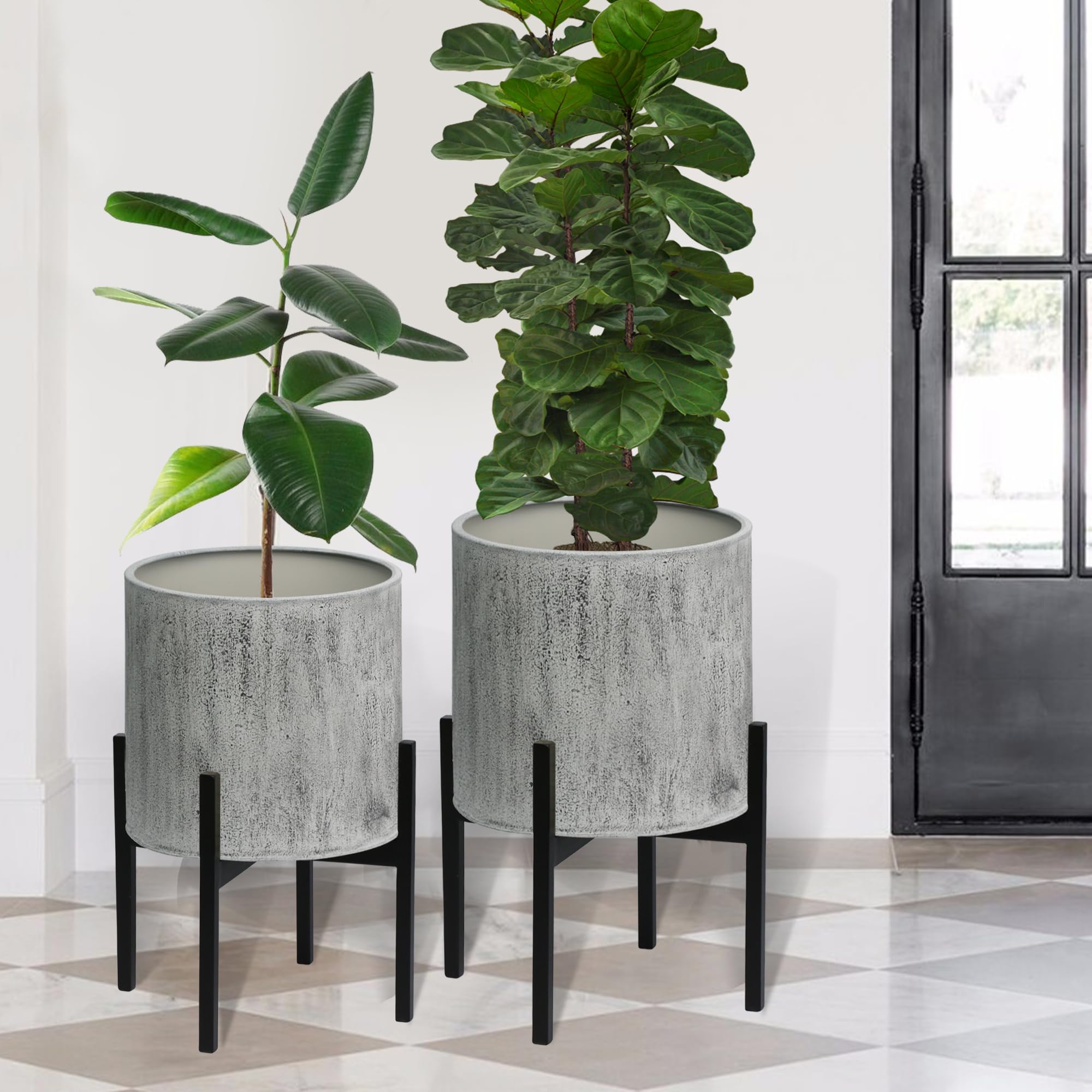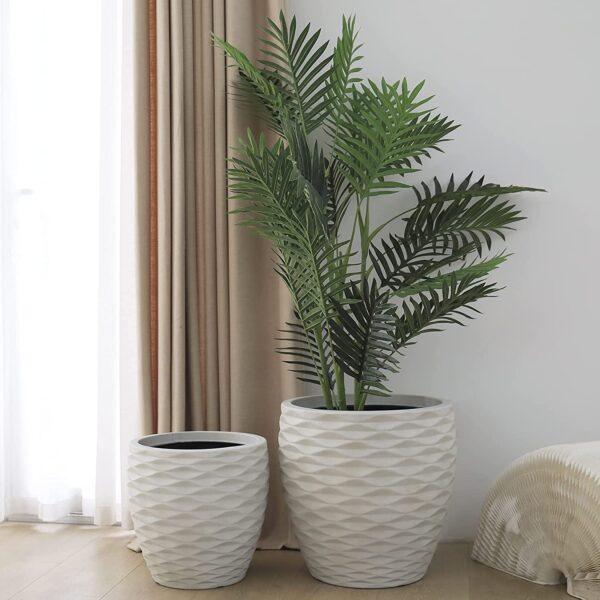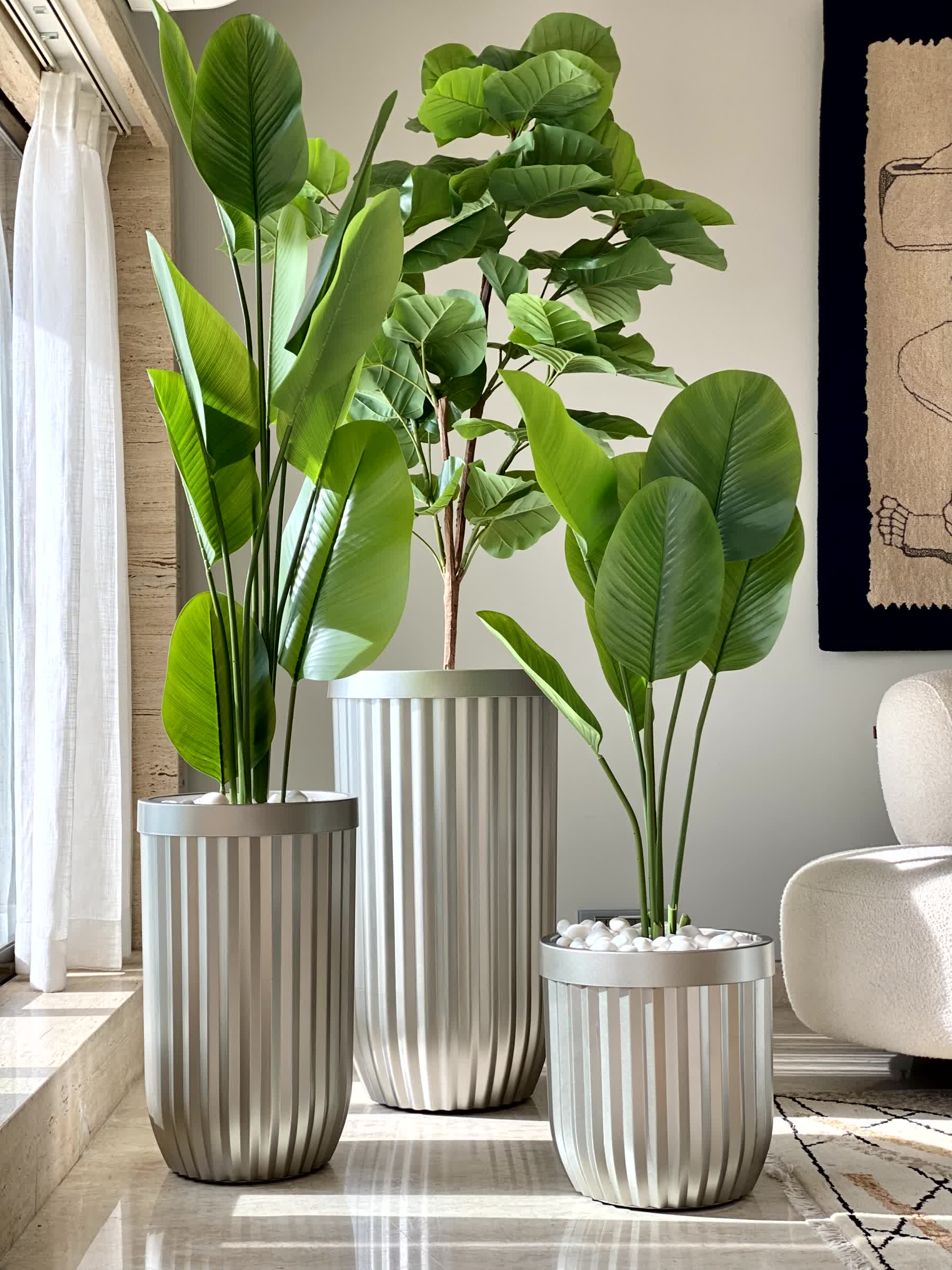Indoor plants have taken the world by storm, and for good reason! Not only do they purify the air, but they also add a touch of life and vibrancy to any space. As someone who has journeyed into the world of indoor gardening, I can attest that large decorative planters transform a room and become a focal point that leaves a lasting impression. In this comprehensive guide, we’ll explore everything you need to know about large indoor decorative planters—from types and styles to maintenance and tips on choosing the right one for your home.
Why Choose Large Indoor Decorative Planters?
Large indoor decorative planters serve several essential purposes in interior design and plant care. Here are some reasons why they are a perfect choice:
- Visual Impact: Large planters make bold statements and can greatly enhance the aesthetic appeal of any room.
- Versatility: They come in a variety of styles, materials, and colors, fitting seamlessly into any décor.
- Air Quality: Indoor plants improve air quality, providing health benefits while also beautifying your space.
- Space Optimization: They can effectively fill empty corners or enhance the beauty of large spaces.
Understanding the Types of Large Indoor Planters
Before choosing a large indoor planter, it’s essential to understand the various types available. Your choice will depend on your style preference and the plants you wish to grow.
1. Ceramic Planters
Ceramic planters are popular for their elegance and variety of designs. They are durable, retain moisture well, and are available in many colors and styles.
2. Metal Planters
Metal planters bring a modern and industrial vibe to your space. They are sturdy, lightweight, and often have a sleek, contemporary finish.
3. Wood Planters
Wooden planters offer a natural look and can be very stylish. They can be constructed with sustainable wood and often add warmth to a space.

4. Fiberglass Planters
Lightweight and resistant to weather changes, fiberglass planters are perfect for both indoor and outdoor use and can mimic the look of ceramic or stone.
Choosing the Right Size and Shape
When selecting a large indoor decorative planter, size and shape are crucial considerations:

- Height: A taller planter can create a dramatic look and elevate the plant’s presence, while a shorter one can ground a space.
- Width: A wider planter can provide more stability, especially for top-heavy plants.
- Shape: Round, square, or rectangular—each shape serves different aesthetic functions. Round planters are great for flowing designs, while square or rectangular planters can offer a more structured look.
Comparison Table for Different Planter Types
| Type | Durability | Water Retention | Weight | Price Range |
|---|---|---|---|---|
| Ceramic | High | Good | Heavy | $$ |
| Metal | Medium | Poor | Light | $$ |
| Wood | Medium | Good | Medium | $$ |
| Fiberglass | High | Good | Light | $$$ |

Where to Place Your Large Planter
The placement of your planter is just as important as its design. Here are my favorite spots based on personal experience:
1. Corners and Empty Spaces
Large planters can fill empty corners and transform them into incredible focal points. Corner placements often enhance the visual interest of a room.

2. By Windows
Placing planters by windows ensures that your plants receive ample natural light, creating a harmonious balance between nature and indoor aesthetics.
3. On Furniture
Elevating a large planter on a stand or a piece of furniture can make an interesting visual display. This works great for creating levels and dynamic arrangements.

Choosing the Right Plants for Large Indoor Planters
Choosing the right plants can make or break your decorative setup. Here are some popular plant choices that thrive in large planters:
1. Fiddle Leaf Fig
The fiddle leaf fig is a favorite for its large, glossy leaves. It can grow quite tall and makes a significant impact indoors.

2. Snake Plant
Also known as Sansevieria, this hardy plant is perfect for indoor conditions and adds striking architectural beauty.
3. Dracaena
With its sleek, elongated leaves, Dracaena plants come in various varieties and make excellent large indoor plants.

4. ZZ Plant
The ZZ plant is known for its resilience and air-purifying qualities, making it a fantastic choice for those just starting out.
5. Monstera Deliciosa
With its unique leaf shape and dramatic size, the Monstera is a statement plant that thrives indoors.
Pros and Cons of Large Indoor Decorative Planters
To help you make an informed decision, here are some pros and cons:
| Pros | Cons |
|---|---|
| Enhances indoor aesthetics | Can be heavy and difficult to move |
| Variety of styles available | Requires regular maintenance |
| Promotes air quality | Can be costly depending on material |
Maintaining Your Large Indoor Planters
Once you’ve chosen the perfect planter and plant combination, it’s time to think about maintenance. Here are some tips to keep your indoor plants healthy and thriving:
1. Watering
Overwatering is the most common issue with indoor plants. Ensure you check the soil moisture before watering. Most plants prefer to dry out slightly between waterings.
2. Fertilizing
Feeding your plants with the right fertilizer regularly will provide them with the nutrients they need to grow strong and healthy.
3. Pruning
Regular pruning not only helps control the size of the plant but also encourages new growth and helps maintain its shape.
4. Repotting
Every few years, repotting into a larger planter can give your plant the space it needs to thrive and can refresh the soil quality.
Conclusion: Make Your Space Lively with Large Indoor Decorative Planters
Large indoor decorative planters can dramatically transform your space, adding beauty and life. By choosing the right planter and plant, considering their placement, and maintaining them properly, you can create an indoor garden that elevates your home’s aesthetic. Remember, it’s not just about having plants; it’s about making a statement and cultivating a peaceful atmosphere in your living space.
Frequently Asked Questions (FAQs)
1. What is the best material for indoor planters?
The best material depends on your style preference, but ceramic and fiberglass are both excellent options for durability and aesthetics.
2. How often should I water my large indoor plants?
Watering frequency varies based on the plant type and environmental conditions, but a general rule is to wait until the top inch of soil is dry.
3. Can I use outdoor planters indoors?
Yes, but make sure they have adequate drainage and are suitable for indoor use to prevent damage to your floors and furnishings.
4. How do I prevent pests in indoor plants?
Regularly inspect your plants, keep them clean, and use natural pest deterrents to keep infestations at bay.
5. What are some popular plants for large indoor planters?
Popular choices include Fiddle Leaf Fig, Snake Plant, Dracaena, ZZ Plant, and Monstera Deliciosa due to their size and visual appeal.